2017 Maserati Levante S: First Drive
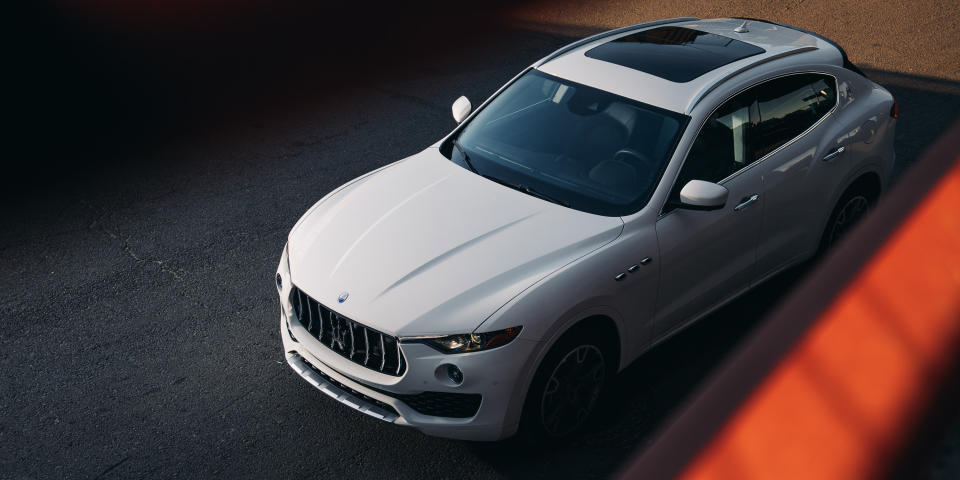
What You Learn is a recurring look at the cars passing through R&T's test fleet. Sometimes you'll learn a lot about the car, other times, not so much. But it'll always be a succinct take on something we've driven recently. - Ed.
Is it a real Maserati?
That's the first question to pop in mind when you get behind the wheel of the Levante, Maserati's first SUV. Unfortunately, it's a question without a simple answer. This Italian automaker has changed so many times over its 100-plus-year history, that it's damn hard to define what makes a True Maserati.
Sure, Maserati has built a number of great cars, but what connects them beyond being relatively fast, loud, and expensive? Really, the only thing you could say about all of Maserati's road cars is that they're simply different than everything else. The Levante is no exception.
You realize that immediately as soon as you see a Levante out in the wild. You'd struggle to call it beautiful, but it's certainly striking. Even in this shade of non-metallic white, the Levante turned heads. A friend told me he thought it looked a bit like an Infiniti, and I wasn't about to argue, with the Levante's curves subtly suggesting something from Nissan's upscale brand at a quick glance.
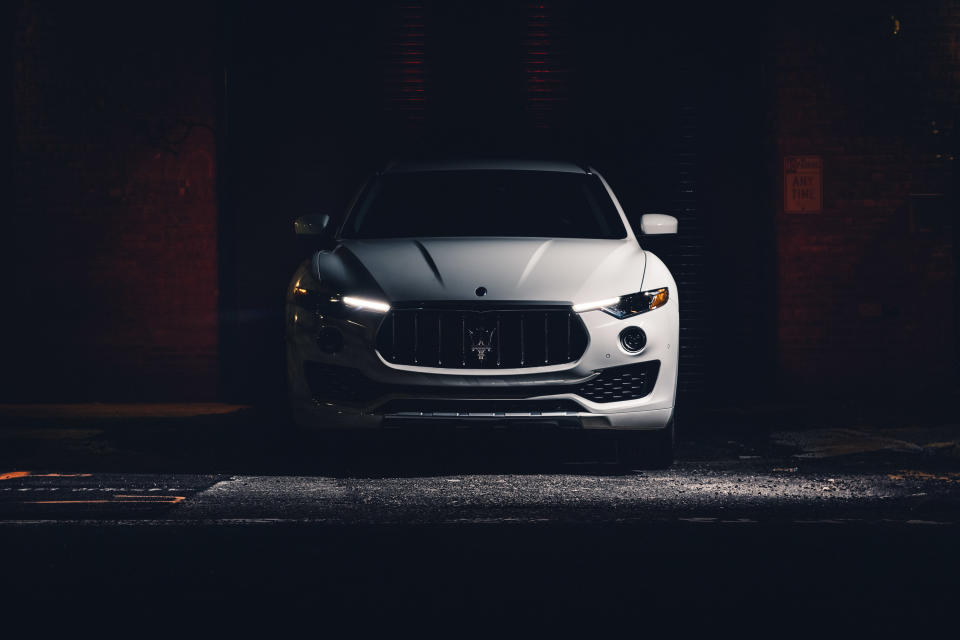
In profile, the Levante is somewhere between an "SUV Coupe," the fastback BMW X6, but it's not a box like a Mercedes GWagen either. The Levante sits low, making it look more like a giant hatchback than an SUV. Lots of chrome details and Maserati Tridents peppered throughout remind you that this is not a German car.
That low ride height isn't permanent. The Levante is based on the same rear-wheel drive platform as the Ghibli and Quattroporte sedans, but it gains a five-level air suspension that can raise ride height for off-roading or lower it further to hunker down in the corners. I didn't test out the Levante's claimed off-road prowess since, well, we're located in New York City and we'd expect basically no Levante owners to try it either, but on twisty country roads, the lowered ride height genuinely helped.
It's really the back-road performance that sets the Levante apart. Interestingly, Maserati opted to use hydraulic, rather than electric, power steering to give the Levante better feel, and while this is hardly the most communicative rack you'll ever experience, it's nicely weighted. The Levante's steering is a nice change of pace from the vague, overboosted steering you get in other luxury cars, but don't expect the wheel to start talking to you like an air-cooled 911.
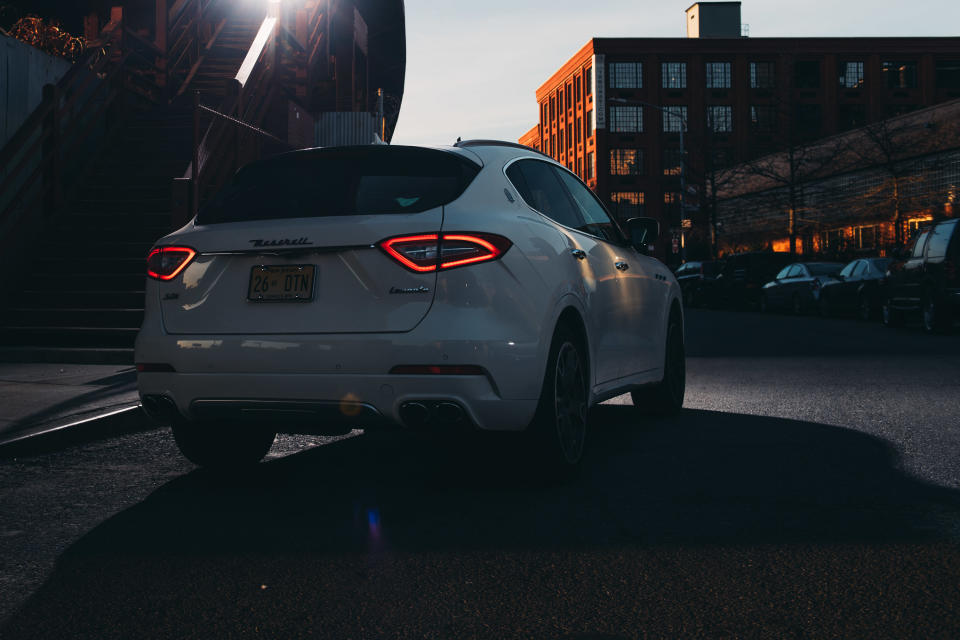
There's also a standard all-wheel drive system, dubbed Q4 in Maserati speak, that operates with a heavy rear bias. Not unlike Jaguar's all-wheel drive system it sends 100 percent of the torque rearwards in regular driving, while only diverting a maximum of 50 percent to the front axle when the car deems its necessary. A real, mechanical limited-slip differential at the rear is also a nice touch.
All of this adds up to a car that handles impressively well, despite its near 4700 lb curb weight. Now don't get me wrong, you definitely feel all that weight heave forward when you're braking before a turn, but the Levante stays very composed and stable. Fun, even. I know, that surprised me too.
You can stiffen the Levante's adaptive dampers, but I never saw any reason to. It rides well in its standard setting, without noticeably sacrificing handling.
Our tester was a Levante S, which comes equipped with a 424-hp version of Maserati's 3.0-liter twin-turbo V6. Maserati makes a big deal of the fact that this engine is built by Ferrari, but it's not at all related to the 2.9-liter V6 found in the new Alfa Romeo Giulia Quadrifoglio. The Alfa's engine is basically a California T's V8 with two cylinders lopped off, while the Maserati shares its aluminum block with Chrysler's venerable Pentastar.
Not that this V6 feels all that related to the engine in a Chrysler Pacifica. There's some turbo lag, but stay above 3000 rpm, and it feels strong. Keeping the V6 in its happy place is made easy by ZF's ubiquitous eight-speed automatic gearbox, which you can shift with two big aluminum paddles mounted to the steering column. These paddles are so nice, you'll put the car in manual mode when you're just cruising around town.
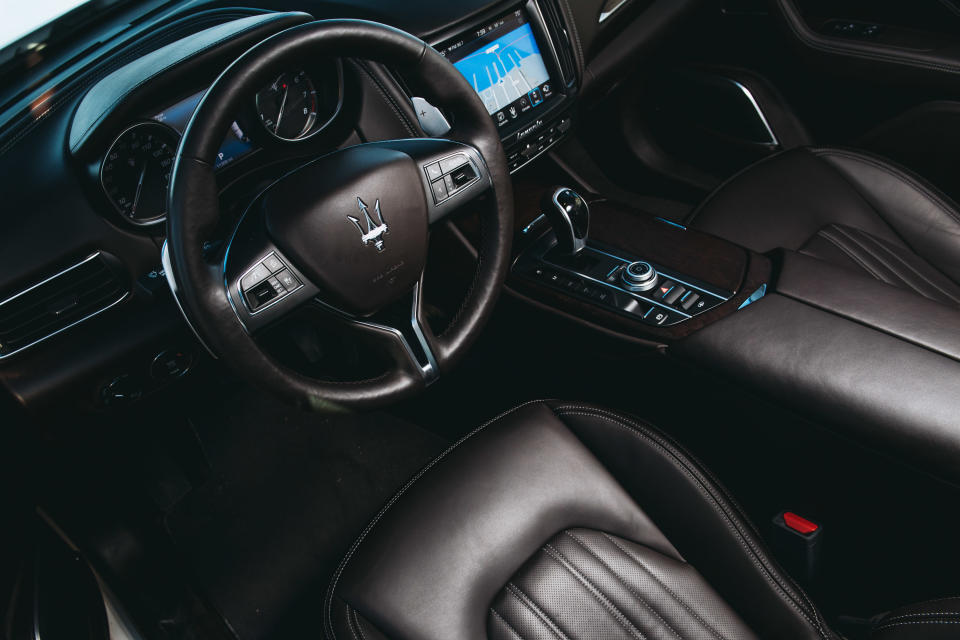
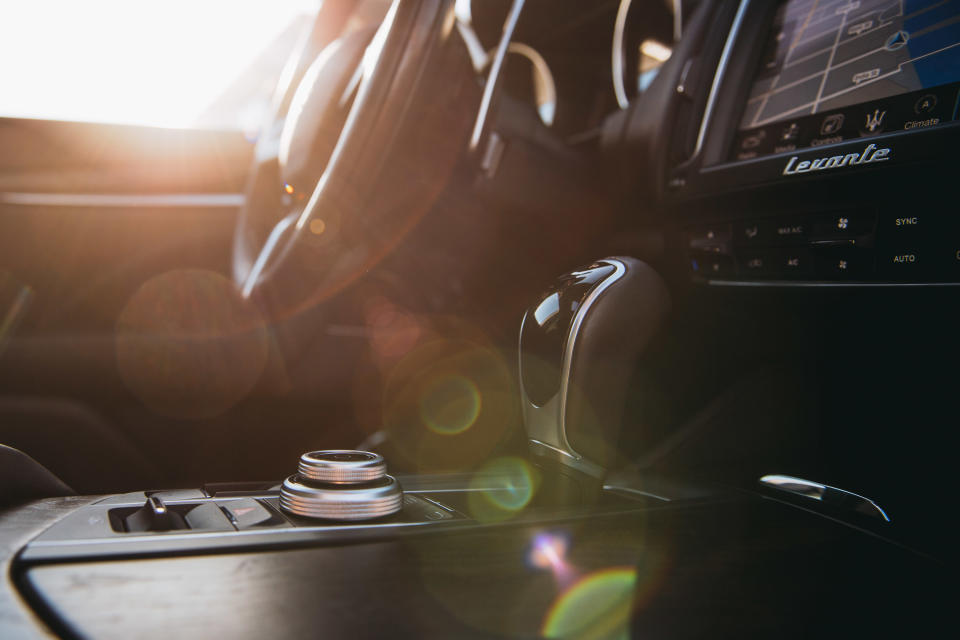
Unfortunately, the rest of the interior doesn't live up to these most-excellent paddles. The mocha brown leather and matte wood trim look nice, but they're unfortunately sharing space with more Fiat Chrysler switchgear than what belongs in a car costing nearly $100,000. The infotainment system too is just a version of Fiat Chrysler's UConnect designed to work with an iDrive-esque rotary knob in the center console. I'm torn about this because on one hand, this system is probably a lot better than what Maserati would have done on its own, but it looks strangely out of place here. Just changing the font could have made it feel more upmarket.
There are some other cheap touches. The shifter feels plasticky and is maddeningly difficult to use–you'll grab park nearly every single time you go for reverse–and there's no physical indication of which gear you're in. The seats, while looking nice and thoroughly Italian, are rather hard. Expect backache if you spend more than a few hours behind the wheel.
You expect quirks like this in an Italian car, but will all the new SUV buyers Maserati hopes to win over accept these? I think you'd really want to own something unique to overlook these faults–especially when the Levante's German competition is just so damn good. And the Levante is expensive, too. The S starts at nearly $84,000, and our tester had over $10,000 in options. That's a lot of money to pay for a something that isn't as fundamentally good at being a luxury car as its rivals.

For those who desire the Levante's unique looks, genuinely fun driving experience, and of course, its famous trident badge, that price is probably worth it. The question for Maserati is whether or not there are enough of those customers to justify its investment.
You Might Also Like

 Yahoo Autos
Yahoo Autos 